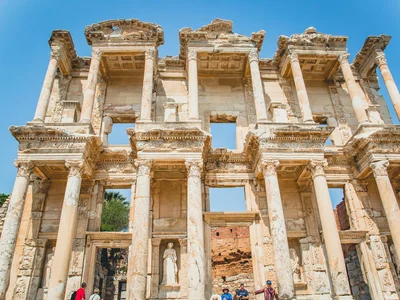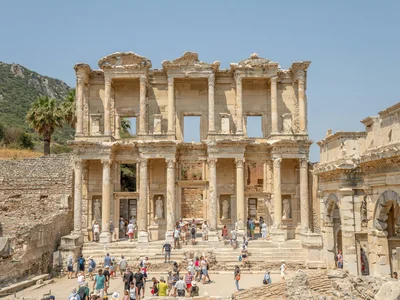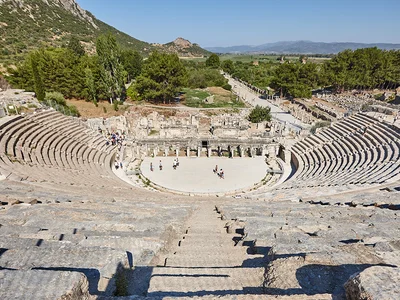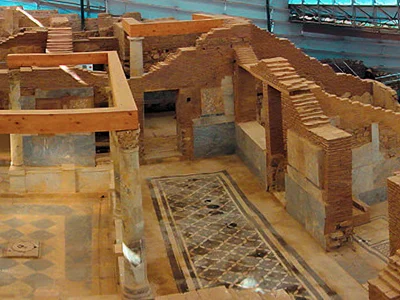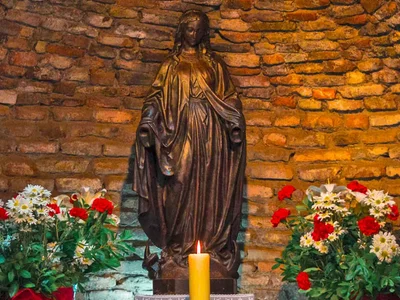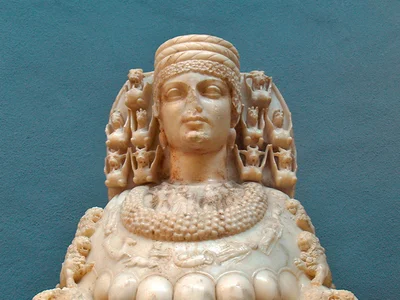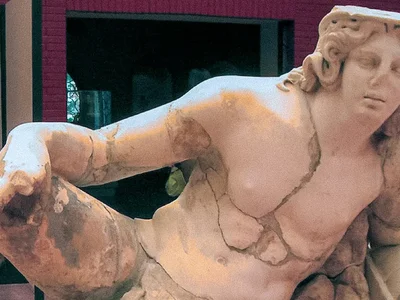Who was Artemis of Ephesus?
Artemis of Ephesus was a revered mother goddess worshipped in the ancient city of Ephesus. Unlike the Greek huntress Artemis, the Ephesian Artemis symbolized fertility, abundance, and nature. Her cult was central to the spiritual and civic life of the city.
What is the Temple of Artemis at Ephesus?
The Temple of Artemis was a monumental sanctuary dedicated to Artemis of Ephesus. It was considered one of the Seven Wonders of the Ancient World due to its size, grandeur, and artistic significance.
When was the Temple of Artemis built?
The earliest version of the temple was built around 550 BC with funding from King Croesus of Lydia. It was designed by the architects Chersiphron and Metagenes and took about ten years to complete.
How big was the Temple of Artemis?
The temple measured approximately 110 meters in length and 55 meters in width. It had 127 columns, each about 18 meters tall, making it larger than the Parthenon in Athens.
What happened to the Temple of Artemis?
The temple was destroyed multiple times—first by fire in 356 BC set by Herostratus, then by floods, earthquakes, and raids over the centuries. By the 5th century AD, it had fallen into disuse and was eventually dismantled.
Why did Herostratus burn the Temple of Artemis?
Herostratus set fire to the temple to achieve eternal fame. In response, Ephesians forbade anyone from mentioning his name—a punishment known as damnatio memoriae—but the story survived through historians.
Why was the Temple of Artemis considered a wonder?
It was renowned for its massive scale, ornate marble columns, intricate sculptures, and spiritual importance. Ancient travelers described it as one of the most breathtaking human achievements of the classical world.
What did worship at the Temple of Artemis involve?
Worship practices included offerings, processions, rituals for fertility and childbirth, music, and large annual festivals that attracted pilgrims from across the ancient world.
What did the statue of Artemis look like?
The cult statue of Artemis was unique, depicting her with a mural crown, outstretched arms, and multiple breast-like or egg-shaped objects on her chest. These symbols likely represented fertility and abundance.
Are any original artifacts from the Temple of Artemis still visible?
Yes. Fragments of sculptures and architectural elements from the temple are on display at the Ephesus Archaeological Museum and the British Museum in London.
Can visitors see the Temple of Artemis today?
Yes, but only a few remnants remain at the original site, including a single reconstructed column and some foundation stones. The area is open to visitors and includes interpretive signage.
How was Artemis of Ephesus different from the Greek Artemis?
While the Greek Artemis was a virgin huntress and moon goddess, the Ephesian Artemis was more of a nurturing, motherly deity associated with fertility, nature, and protection. Her iconography is entirely distinct from classical Greek representations.
Is Artemis mentioned in the Bible?
Yes. In the Book of Acts, a riot breaks out in Ephesus led by silversmiths angry about the decline in demand for Artemis idols. The crowd famously shouts, 'Great is Artemis of the Ephesians!'
Was the Temple of Artemis used for other purposes?
In addition to worship, the temple served as a marketplace, cultural center, and even a place of refuge. It had a powerful influence on the economy and politics of the city.
What should visitors expect at the site today?
Visitors can view the lone reconstructed column standing on the original site, surrounded by peaceful countryside. A visit to the nearby Ephesus Museum enhances the experience with statues, coins, and relics from the temple.

